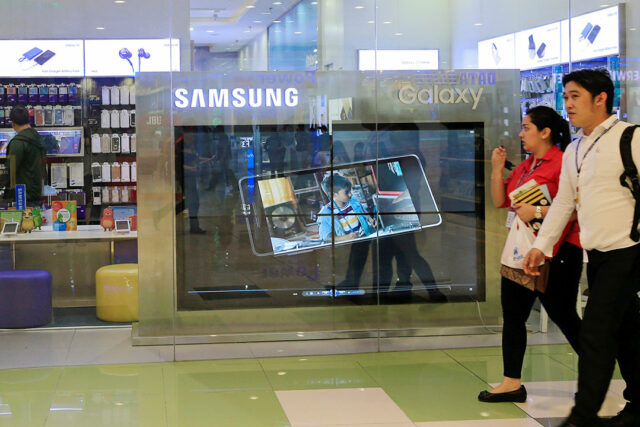
Colliers Insights
By Joey Roi Bondoc

THE retail sector is one of the more stable segments of the Philippine property market. We attribute this to the Philippine economy being driven by personal consumption, with household spending covering more than 70% of the Philippine economy. The retail sector is also driven by remittances from Filipinos working abroad.
The Philippine regulatory environment has become more accommodating to foreign retailers planning to enter or expand in the Philippines. We are seeing greater interest from foreign retailers planning to locate in the country, contributing to greater absorption of retail space across the Philippines and potential increase in lease rates, which should benefit property firms with retail foothold.
This piece lays out recommendations on how mall operators and retailers can future-proof their businesses amid the waning impact of revenge spending and increasing cost of basic commodities. Retail stakeholders should also look at global economic and geopolitical issues that might hamper the sector’s growth.
INNOVATIVE USE OF SPACES TO ENTICE MALLGOERS
Colliers believes that mall operators should reactivate their event spaces or activity centers and attract more mallgoers by organizing events such as trade fairs, exhibits and concerts to drum up retail interest.
Meanwhile, food and beverage (F&B), clothing and footwear retailers should consider opening pop-up stores, especially those testing the Metro Manila retail market which is starting to rebound post-COVID. This is particularly important for foreign players that are planning to gauge the local market’s reception.
FUTURE-PROOF HIGH-DENSITY RETAIL SPACES
High-density retail spaces such as food courts and family entertainment centers were greatly affected by COVID lockdowns. Now that restrictions have eased and consumers are starting to go out and gather, Colliers recommends that retailers continue encouraging social distancing measures and implementing regular sanitation and other health and safety protocols.
Now is an opportune time to ramp up marketing of these high-density retail spaces. These retail spaces also raise consumer traffic and entice mallgoers to stay longer and spend more.
LAUNCH OF RETAIL REITS
Colliers believes that property developers with retail footprint should consider divesting malls into their real estate investment trust (REIT) portfolio, especially now that the retail segment is recovering. Malls generate recurring income and are now a viable REIT asset class as vacancy rates are stabilizing and lease rates are starting to go up.
In our view, developers should carefully assess which retail outlets to add to their REIT portfolio and should consider projected mall space absorption as well as profiles of retailers willing to take up brick-and-mortar spaces.
Developers should take advantage of renewed interest from foreign retailers as well as continued expansion of Philippine economy mainly driven by personal consumption. Foreign players that have previously pulled out of the Metro Manila market are making a comeback and this is indicative of the sector’s rebound.
LOCK IN SPACE IN PRIME LOCATIONS
Colliers believes that retailers should be quick in securing mall spaces in key business districts across Metro Manila now that vacancy rates are stabilizing while rents are gradually increasing.
In our view, this trend is likely to persist in the market as footfall is rebounding across the capital region. We still see substantial vacancies in selected malls in Quezon City, Bay Area, and Alabang. Retailers should further explore the viability of opening physical space in these locations, especially in sub-locations where more office and residential buildings are likely to be completed. Looking forward, we see a heightened competition for prime retail spaces in central business districts in Makati, Ortigas Center, and Fort Bonifacio.
SEIZE THE DEMAND FROM NEW FOREIGN RETAILERS ENTERING THE PHILIPPINE MARKET
Colliers sees an improving demand for physical space from foreign retailers. We attribute this to improving consumer demand on the back of sustained macroeconomic expansion as well as enactment of measures that further relax the country’s retail regulatory environment.
Mall operators should capture demand from foreign retailers planning to enter the country by taking into account their size and fit-out requirements.
AMPLIFY HOLIDAY MARKETING INITIATIVES
Colliers believes that retailers need to amplify their online and offline strategies especially now that demand is likely to increase due to holiday spending.
In our view, the release of holiday bonuses and additional remittances from Filipinos working abroad are likely to boost Filipinos’ purchasing power in the fourth quarter of 2023 and retailers and mall operators should seize this additional push from Filipinos’ propensity to spend.
REACTIVATE ACTIVITY CENTERS AND CURATE EVENTS
In our view, mall operators should maximize the consumers’ willingness to visit brick-and-mortar mall spaces and participate in various activities held in malls’ activity centers.
Events such as wedding fairs, bazaars, and even housing summits can entice more consumers to visit malls, stay longer and even spend more. Colliers believes that mall operators and retailers should closely coordinate in curating events that will be held in malls’ activity centers.
REASSESS IDEAL RETAIL MIX
In our view, mall operators should carefully reassess the retail mix that they will be offering their consumers given the entry of more foreign retailers and expansion of local ones. This will especially be crucial for new malls that opened in the fourth quarter of 2023 and are planning to maximize holiday-induced spending from Filipino consumers.
While majority of retailers that will occupy physical mall space will be from the F&B segment, mall operators should thoroughly assess the ideal retailers that they will be featuring in their malls alongside the typical F&B, accessories, and personal care retailers.
Mall operators should carefully study which retail mix will provide them with optimal level of spending from consumers as well as sustained footfall for the long term.
RAMP UP OMNICHANNEL STRATEGY AND CASH IN ON HOLIDAY SPENDING
Mall operators and retailers should work hand in hand in improving the omnichannel shopping experience of their consumers. While Filipinos have returned to brick-and-mortar shopping, retailers should also consider the segment of Filipino shoppers that prefer to buy items online.
In our view, redesigning of physical mall spaces should be complemented by the improvement of retailers’ online shopping platforms. We forecast a continued reconfiguration of physical mall spaces and we see this trend even after holiday-induced spending in the last quarter of 2023.
Joey Roi Bondoc is the research director for Colliers Philippines.